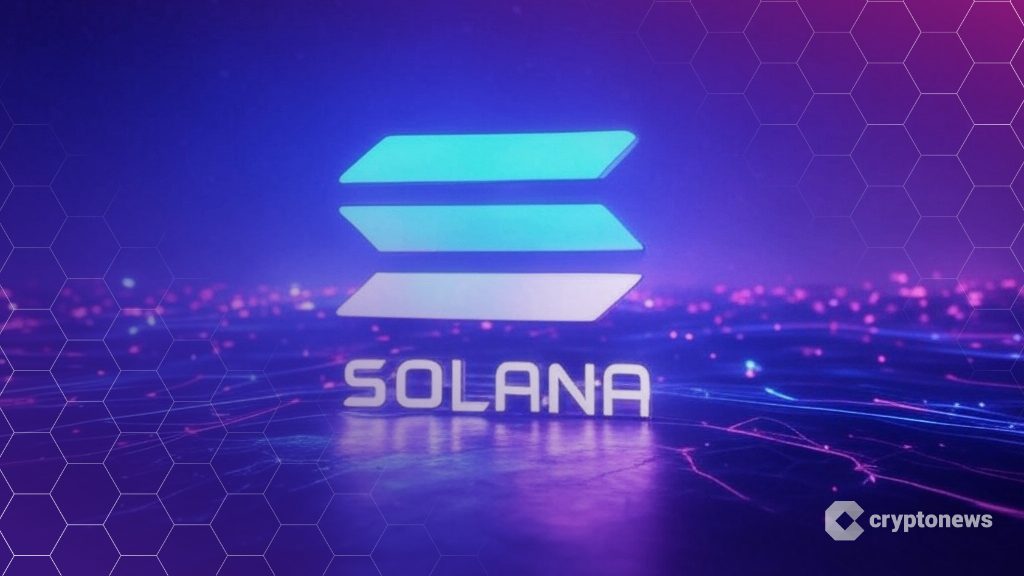BlackRock’s Fink: ‘Every Asset’—Can RWA tokenization Hit $19T by 2033?

Tokenization is expected to have a major impact on financial markets, changing the way value moves across global systems.
A recent report on April 7 from blockchain company Ripple and Boston Consulting Group (BCG) estimates that the market for tokenized real-world assets (RWAs) will reach $18.9 trillion by 2033.
The World Economic Forum further estimates that by 2027, tokenization could account for 10% of global Gross Domestic Product.
Larry Fink, CEO of BlackRock—the world’s biggest money manager—also recently stated, “Every asset—can be tokenized,” in his annual letter to investors.
Tokenization of RWAs Must Solve Real-World Problems
While tokenized RWAs have enormous potential, the utility behind these products is essential for growth.
Sam Mudie, co-founder and CEO of fintech platform Savea, told Cryptonews that the tokenized RWA market will only reach $18.9 trillion if tokenization can solve real-world problems.
“This isn’t just about wrapping traditional assets in new tech,” Mudie said. “Growth has only come where the utility is clear – like using stablecoins for dollar access or treasuries for yield and efficiency.”
Utility adoption appears to be underway, though. Recent findings from Keyrock and Centrifuge show that stablecoins are already a $210 billion market, functioning as digital dollars.
Beyond stablecoins, on-chain RWA value reached $15.2 billion last year, as use cases for private debt, commodities, real estate, and bonds take off.
Source: The Great Tokenization Shift report from Centrifuge and KeyrockTokenized US Treasury Products Show Enormous Growth
Interestingly, tokenized US Treasury products doubled from $1 billion to $2 billion in 2024, already exceeding $4 billion this year. Given this, tokenized US Treasuries are positioned to be one of the best use cases for RWAs moving forward.
According to Keyrock and Centrifuge’s report, the US Treasury market – with over $28 trillion in outstanding debt – represents the world’s largest and most systemically important financial market.
However, the infrastructure supporting treasury trading remains inefficient due to settlement delays, fragmentation and multiple parties creating operational complexities.
As a result, a number of tokenized treasuries and products are underway. Marcin Kazmierczak, co-founder of decentralized oracle network RedStone, told Cryptonews that tokenized US Treasury bills are gaining traction. These act like regular T-bills, but they are represented as digital assets on a blockchain.
“Treasury Bills are those debt securities issued by governments for short terms to fund public expenses. It’s one of the fundamentals of the global economy. Tokenized US T-bills allow broader access to exposure to yield coming from these T-bills,” Kazmierczak said.
Kazmierczak pointed out that BlackRock’s USD Institutional Digital Liquidity Fund (BUIDL) issued by Securitize has been growing for several reasons.
“First and foremost, BlackRock is the biggest asset management institution globally with $10 Trillion in Assets Under Management (AUM),” he said. “Securitize has been very effective in growing the adoption of BUIDL with other projects like backing of Ethena’s USDtb, and lastly, the upcoming convergence of DeFi and on-chain finance that will be unlocked with RedStone price feeds for BUIDL.”
The USDtb stablecoin was launched in partnership with tokenization platform Securitize and 90% of its reserves are allocated to BlackRock’s BUIDL fund.
Kazmierczak explained that USDtb can serve as collateral in established money markets such as Aave, while allowing financial instruments like BUIDL daily interest-rate swaps.
“This unlocks entirely new market opportunities across the evolving RWA landscape,” he added.
An example of a tokenized treasury is the Janus Henderson Anemoy Treasury Fund. This was launched on Centrifuge and was rated Aa by Moody’s and A+ by Particula.
The fund provides institutional access to US Treasuries on-chain, every day at all hours with redemptions of up to $125 million.
Keyrock and Centrifuge’s report points out that the success of stablecoins as a tokenized representation of US dollars demonstrates the potential behind tokenized treasuries and products.
Yet despite on-chain treasury assets totaling $4 billion today, they represent only 2% of the overall stablecoin market cap. This shows the need for substantial expansion.
Tokenized Stocks May Top $1 Trillion
Tokenized stocks are also on track to exceed $1 trillion in market capitalization. As of April 23, tokenized stocks comprise around $370 million in cumulative market capitalization, according to data from RWA.xyz.
Arnab Naskar, CEO of tokenized investment platform STOKR, stated at the TokenizeThis conference in New York that the total addressable market for tokenized stocks is difficult to project, but is “definitely a bigger trillion-dollar market.”
Indeed, this number is expected to increase as traditional equity markets face challenges such as business-hour trading, batch settlement and access limitations.
Like tokenized treasuries, blockchain-based solutions can facilitate 24/7 trading, near instant settlement and direct ownership transfers.
Currently, Coinbase is considering making tokenized shares of its stock available on Base, its Ethereum layer-2 network. A proposed “Broker-Dealer Tokenization Act” in the US further seeks to give broker-dealers authority to issue and trade securities on distributed ledgers.
Tokenized Luxury RWAs Gaining Traction
Luxury items like fine wine, art and collectibles are also being tokenized as RWAs to improve access and liquidity.
“Currently just a $50 million market, tokenized luxury RWAs such as these are forecast to reach $10 billion by 2033,” Mudie noted. “I’m optimistic, but only if the focus stays on usefulness over novelty.”
This appears to be the case, as projects like Crurated – a tokenized fine wine marketplace – tokenize millions of dollars in luxury assets.
Alfonso De Gaetano, CEO of Crurated, told Cryptonews that the platform has tokenized more than $60 million in fine wine assets, accounting for over 300,000 bottles.
“Unlike theoretical projections, our growth trajectory shows the real-world appetite for this technology,” De Gaetano stated. “We’ve connected over 200 elite producers with more than 10,000 collectors, demonstrating that blockchain solves genuine market problems of provenance, authenticity, and liquidity.”
According to De Gaetano, the wine market is approaching $500 billion globally, but secondary trading accounts for just $9 billion today due to friction, trust issues, and high fees. He believes that blockchain removes these barriers, helping secondary markets grow.
“The key is solving practical problems,” he said. “Our blockchain infrastructure provides verified provenance for every bottle, addresses the high fees charged by traditional auction houses (up to 30%), and has the potential to reduce trading timelines from months to minutes.”
Like tokenized treasuries and stocks, De Gaetano shared that stablecoins are a key component of Crurated’s business model.
“Stablecoins facilitate secure, frictionless transactions across all geographies and minimize fees for buyers and sellers alike. This global settlement layer is essential for creating truly efficient markets for luxury assets like fine wine, where international transactions are common,” he said.
Challenges May Hold Back Adoption
While tokenized RWA growth is inevitable, regulatory challenges will slow adoption.
Bhaji Illuminati, CEO of Centrifuge, told Cryptonews that while she believes the tokenized RWA market will reach $19 trillion by 2033, a clear and consistent set of standards and regulatory guidelines for stablecoins is still needed.
“Without that foundation, many institutions have been hesitant to fully engage,” Illuminati said.
Fortunately, progress on this front is being made. US Federal Reserve Chair Jerome Powell recently stated that establishing a legal framework for stablecoins is a “good idea.”
Bo Hines, executive director of Trump’s Council of Advisers on Digital Assets, also stated that a comprehensive stablecoin bill was a top priority for the current administration.
Hines mentioned that after the Senate Banking Committee passed the GENIUS Act, a final stablecoin bill could arrive at the president’s desk “in the next two months.”
Although regulations are still not clear, Keyrock and Centrifuge’s report notes that 2025 will be a breakout year for tokenized RWAs, increasing to around $50 billion.
This will be driven by both technical and regulatory improvements, along with a greater demand for these assets moving forward.
The post BlackRock’s Fink: ‘Every Asset’—Can RWA tokenization Hit $19T by 2033? appeared first on Cryptonews.



